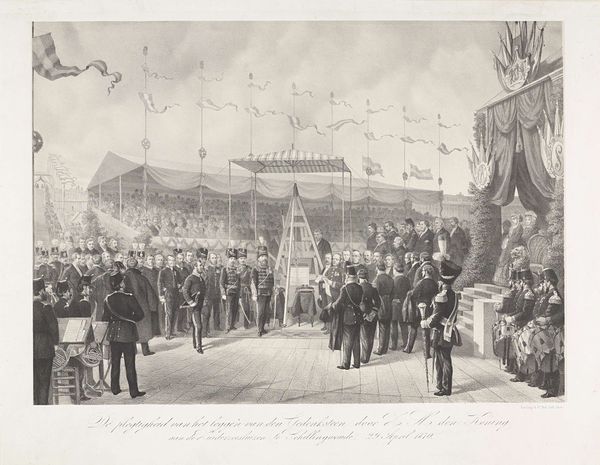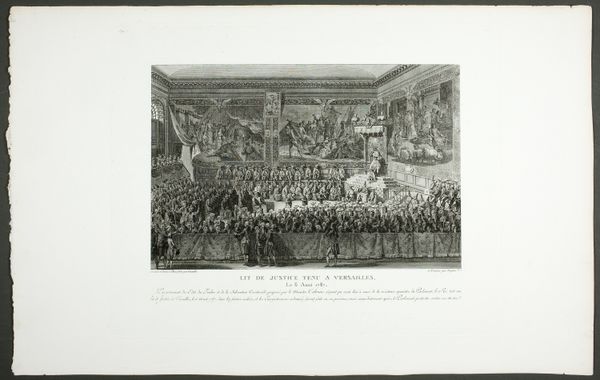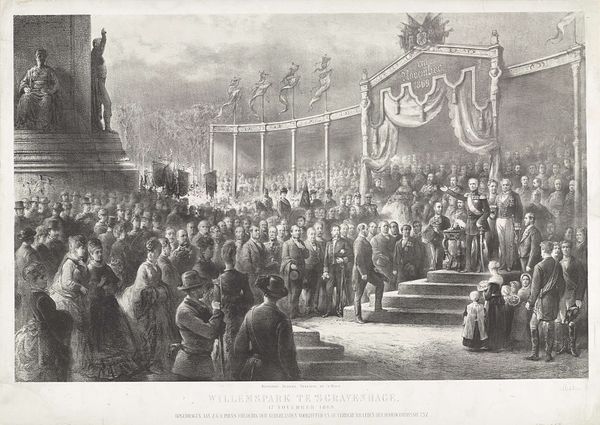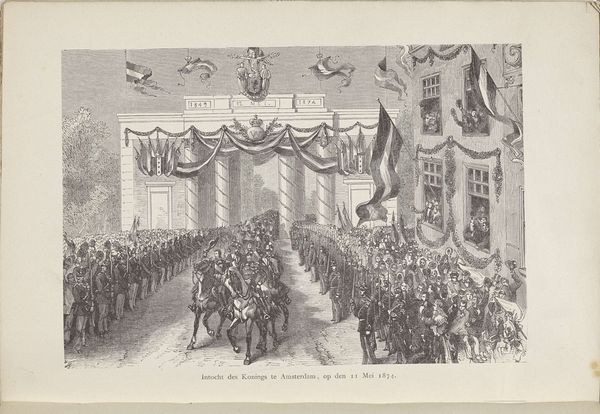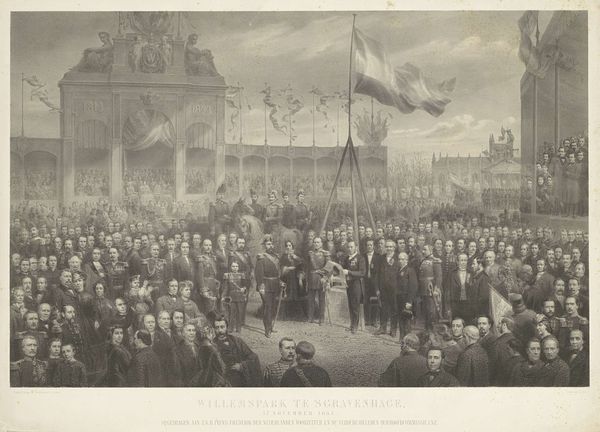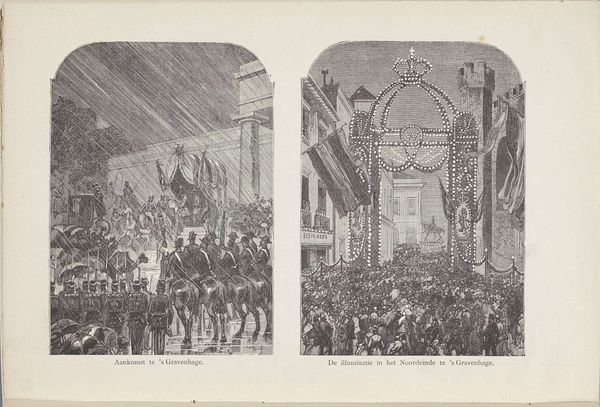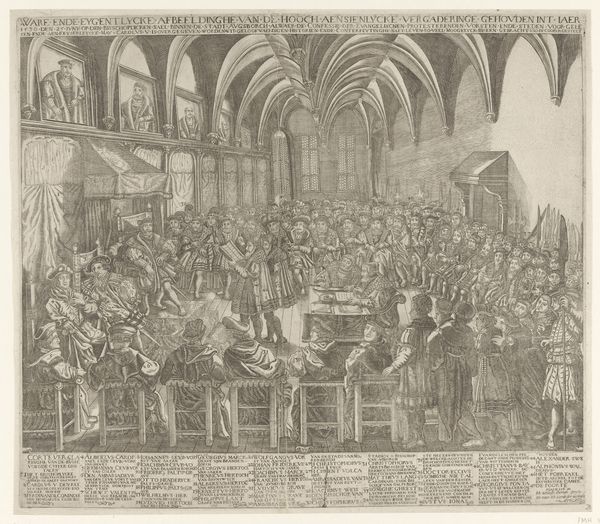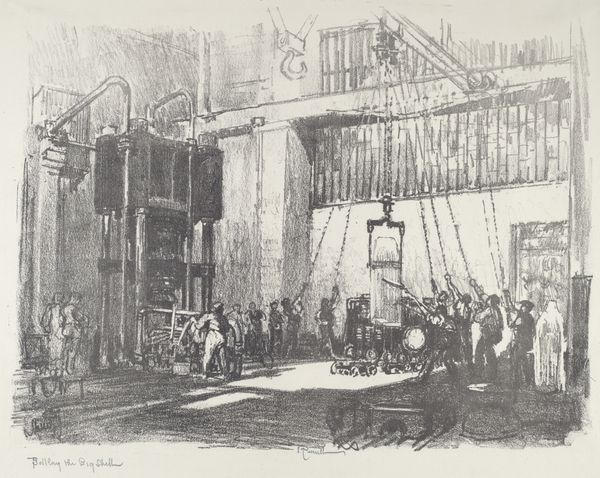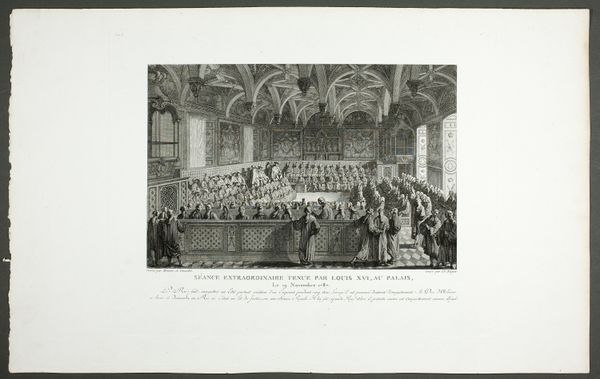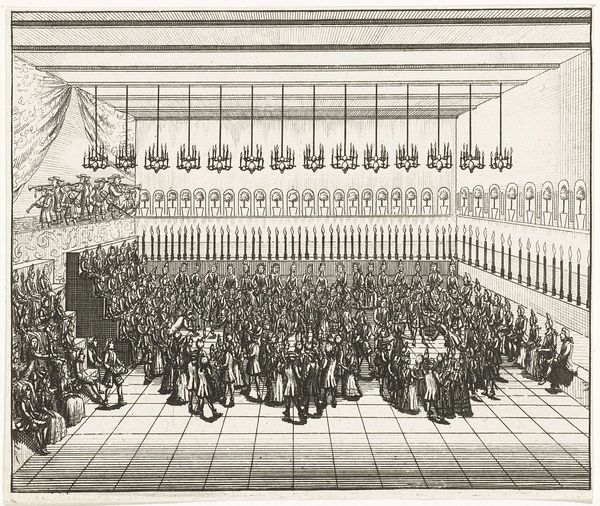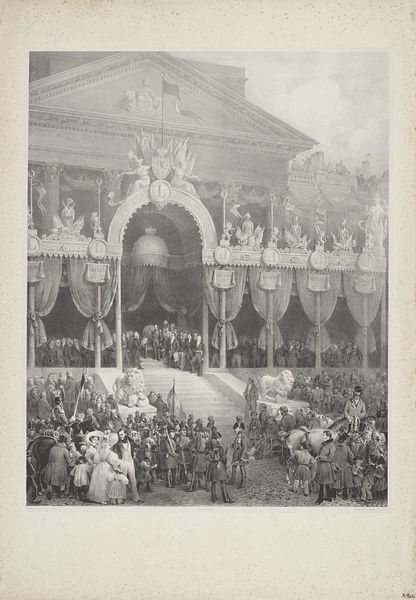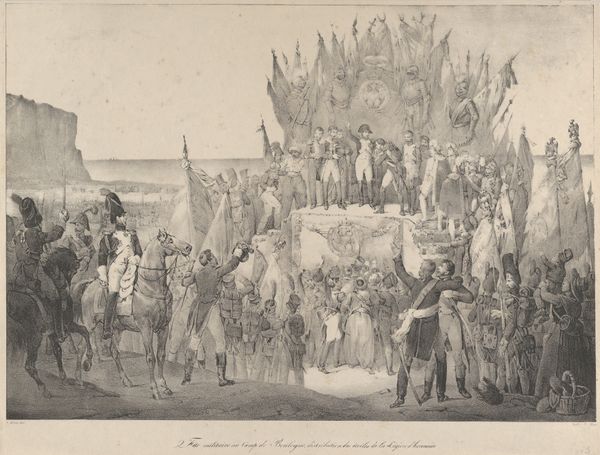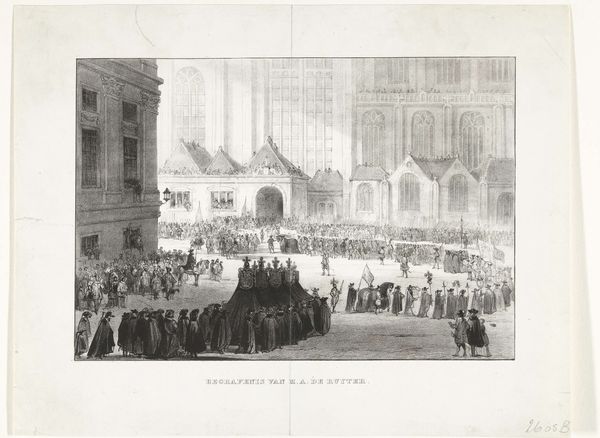
Het leggen van den eersten steen door Z.M. den Koning aan de spoorwegbrug te Zutphen op den 22.n October 1861 1861
0:00
0:00
graphic-art, print, engraving
#
portrait
#
graphic-art
#
16_19th-century
# print
#
genre-painting
#
history-painting
#
academic-art
#
engraving
#
realism
Dimensions: height 658 mm, width 845 mm
Copyright: Rijks Museum: Open Domain
Wilhelmus Cornelis Chimaer van Oudendorp created this print to commemorate the laying of the foundation stone for the Zutphen railway bridge by the King in 1861. The image creates meaning through its visual codes, cultural references, and historical associations. Made in the Netherlands, it reflects a time of rapid industrialization and nation-building. The railway, a symbol of progress, is celebrated here as a project of national importance, with the monarch playing a central role. The print itself, as a mass-reproduced image, participates in creating a sense of shared national identity around this event. Institutional histories are relevant here too. The monarchy, the engineering profession, and the press all collaborate in staging and disseminating this image. The print is self-consciously progressive, aligning the monarchy with modernity and progress. The role of the historian is to unpack these layers of meaning, using archives, newspapers, and other sources to understand the social and institutional context in which this image was made and consumed. The meaning of art is contingent on these contexts, and our understanding of it evolves as we uncover new perspectives.
Comments
No comments
Be the first to comment and join the conversation on the ultimate creative platform.
